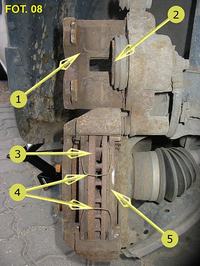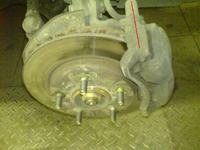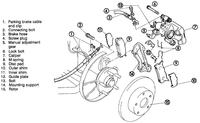The guides in the brake caliper on which the brake pads "work" (move) are lubricated with copper grease (it can be a spray, but grease from a tube or other container will be much better because it is much denser and can be applied more freely).
Copper grease does not adversely affect the braking quality.
Lubricants other than copper ones, after they come into contact with the working surface of the disc / pad, are dangerous, as they deteriorate the braking quality (in extreme cases, they may lead to glazing of the pads, etc., conditions requiring their replacement with new ones + thorough cleaning of the brake disc).
A good branded, copper spray grease works great when we bought some poor pads that like to squeak, then it is enough to splash on the brake disc in moderation and the squeaking problem disappears. (Note! Do not use other types of lubricant!).
However, when it comes to the lubrication of the pistons, commonly known as brake cylinders, I recommend special lubricants intended for this purpose.
Often, such lubricants are added to motorcycle brake caliper repair kits. Such a set consists of rubber seals on which the plunger "slides" and a small container with grease (often having an interesting, e.g. pink / red color).
Alternatively, it is worth "jerking" and buying a very good lubricant for Wurth's brake cylinders ->
http://www.wurth.pl/katalog2/karty/A0893%20980.pdf Especially if someone rides a motorcycle, he will feel the differences - the blocks bounce easily and during, for example, pushing, they only gently rub against the shield (read: moto offers little resistance).
Do not lubricate the cylinders this way ->
http://w4.bikepics.com/pics/2009/03/22/bikepics-1608371-full.jpg 






